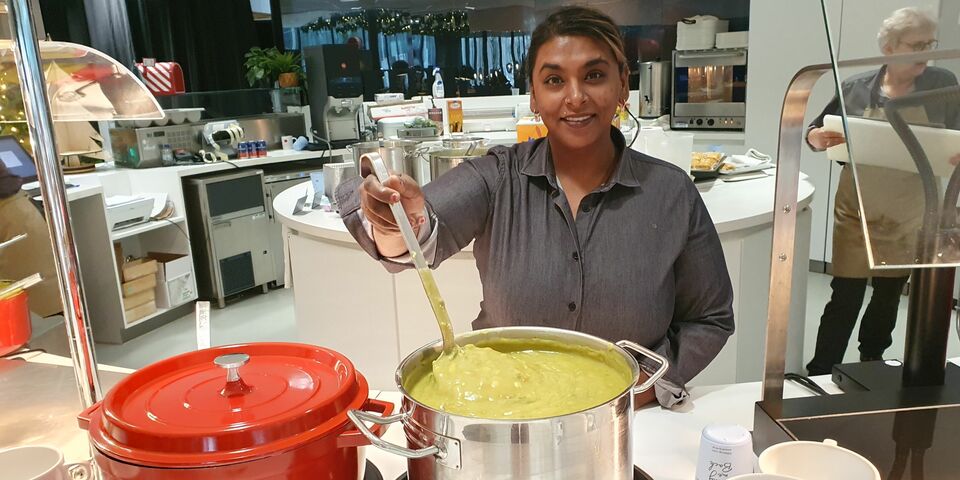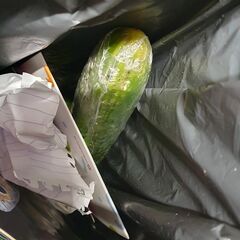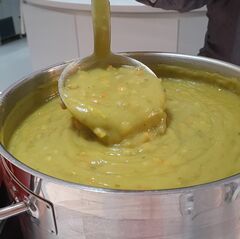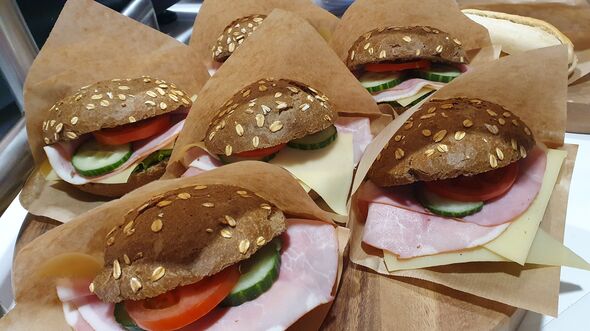More data, less food waste
A leftover lunch in the trash can - it’s simply not acceptable anymore. In order to reduce food waste, caterer Appèl - responsible for the catering facilities at TU/e - uses data to better predict sales. Cursor spoke with Appèl account manager Steven ten Cate about their efforts to reduce food waste.
Despite the recent increase in awareness of the enormous amount of good food going to waste, we still throw away about 33 kilograms of food per person every year. Throughout the entire chain - from farm to fork - that amounts to a whopping 2 billion kilos of wasted food per year. That needs to change, agrees Appèl, the catering service provider at TU/e. According to Steven ten Cate, who works as an account manager at Appèl and can often be found on the TU/e campus, additional steps will be taken in the coming months to keep lunch sandwiches out of the waste chain. “We want to become the most sustainable regional caterer.”
Good food ends up in the trash too often, also on the TU/e campus. Think of the contents of a lunch box when someone decides to buy a sandwich after all, but also of leftover sandwiches that were ordered for a meeting, sometimes even entire trays. It is wasteful on multiple fronts, says Ten Cate, who, by the way, does not subscribe to the idea of throwing away trays full of lunch sandwiches, because according to him, these are almost always distributed in the respective department in case of a surplus. “Throwing away food is a huge burden on the environment. Not only the products themselves are wasted, but also resources such as water, and energy needed during cultivation. Food waste means waste throughout the entire chain, including purchasing and production time. Because that discarded sandwich was prepared by someone.”
Pea soup in freezing cold
By providing even better production advice to the catering facilities, Appèl hopes to further reduce the amount of excess food. And they are increasingly using data for this, explains Ten Cate. “The number of guests we expect per location and per day depends on many different factors. The lecture schedule, whether or not it’s an exam week, the time of the month – people spend more money at the beginning of the month than at the end – but also the weather. When it rains, people tend to stay inside the building and have lunch at the restaurant more often. And when it’s cold outside, pea soup sells out much faster. By collecting data, we can get a better picture of what we sell on a day. To that end, we keep track of exactly what we sell at the product level - an herb cheese sandwich - and what is purchased at the ingredient level: bread, cream cheese, cucumber. Based on the number of debit card transactions, we can approximate the number of guests and how much they consume in the restaurant. There are already some educational institutions where we can measure the number of present building occupants live. Based on this data, we can make an even better estimate of how many guests we might receive that day. This allows us to increasingly tailor production for each location. And because we can make more targeted purchases, this ultimately results in the entire chain becoming more effective.”
Too Good To Go
According to Ten Cate, the use of data is already helping against food waste. “The improved production advice, among other things, has already led to a halving of our waste in recent years. So we can increasingly coordinate our supply with demand. However, preventing food waste altogether will be difficult.”
On Appèl’s website, it says they collaborate with food waste app Too Good To Go. Users of this app can pick up leftover food at a small price. Can this also be implemented at TU/e? “There are a few locations, such as Flux and Vertigo, where we regularly offer food via Too Good To Go. We’re looking into how we can organize that on a more systematic basis, while adhering to the legal requirements for food safety. By January, all catering facilities at TU/e are supposed to work with Too Good To Go. It’s a first step in the right direction, but we would like to discuss with students and staff how we can focus on a more sustainable future even better.”
Responsibility
According to ten Cate, sustainability means more than combating food waste. “We make choices to contribute to the CO2 and protein transition; the offer of animal proteins in TU/e restaurants has already been significantly reduced. In addition, we want to encourage local sourcing of products in order to limit the number of transport movements. And we’re are also working to minimize our overall waste stream by using less or different packaging. For example, serving soup in an earthenware bowl with a stainless steel spoon.” Finally, Ten Cate emphasizes that the guests themselves also carry a great responsibility. “It’s great that we have a “final safety net” to save good food from the trash via Too Good To Go, but you can also contribute yourself. For example, notify well in advance if you won’t be attending a meeting with a catered lunch. It might sound strange coming from a caterer, but: If you brought your own lunch, then don’t buy a sandwich.” And to keep things sustainable, Ten Cate adds with a wink that he would like to see the –increasingly disappearing – tableware and utensils returned after use.





Discussion